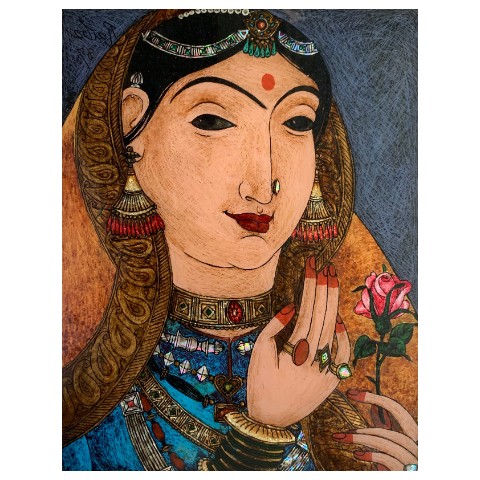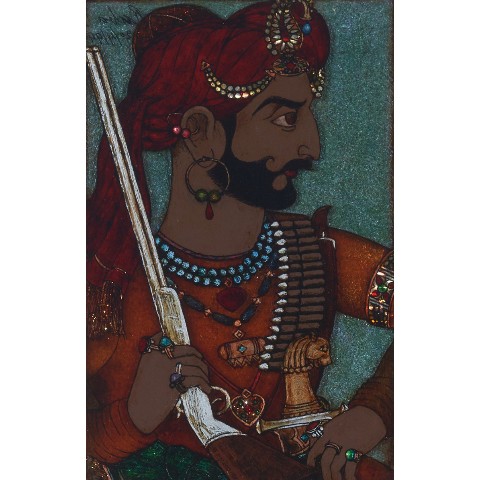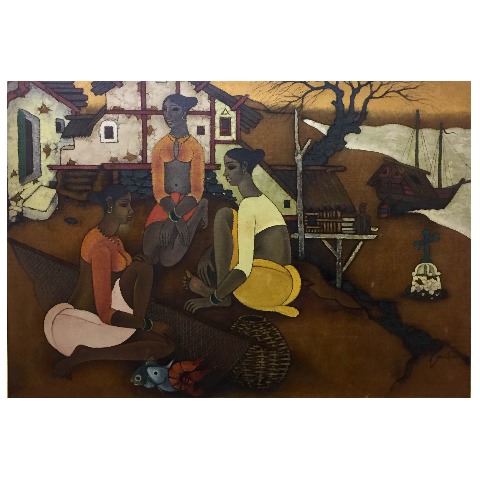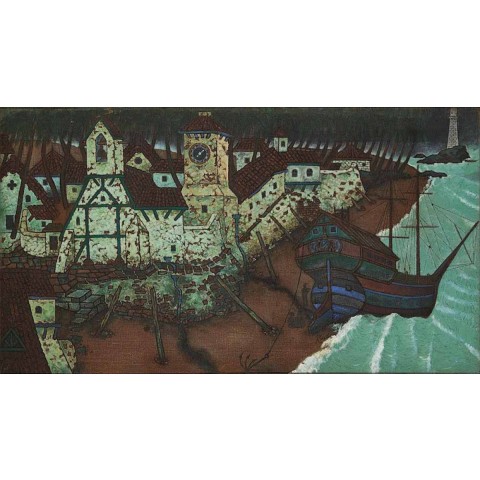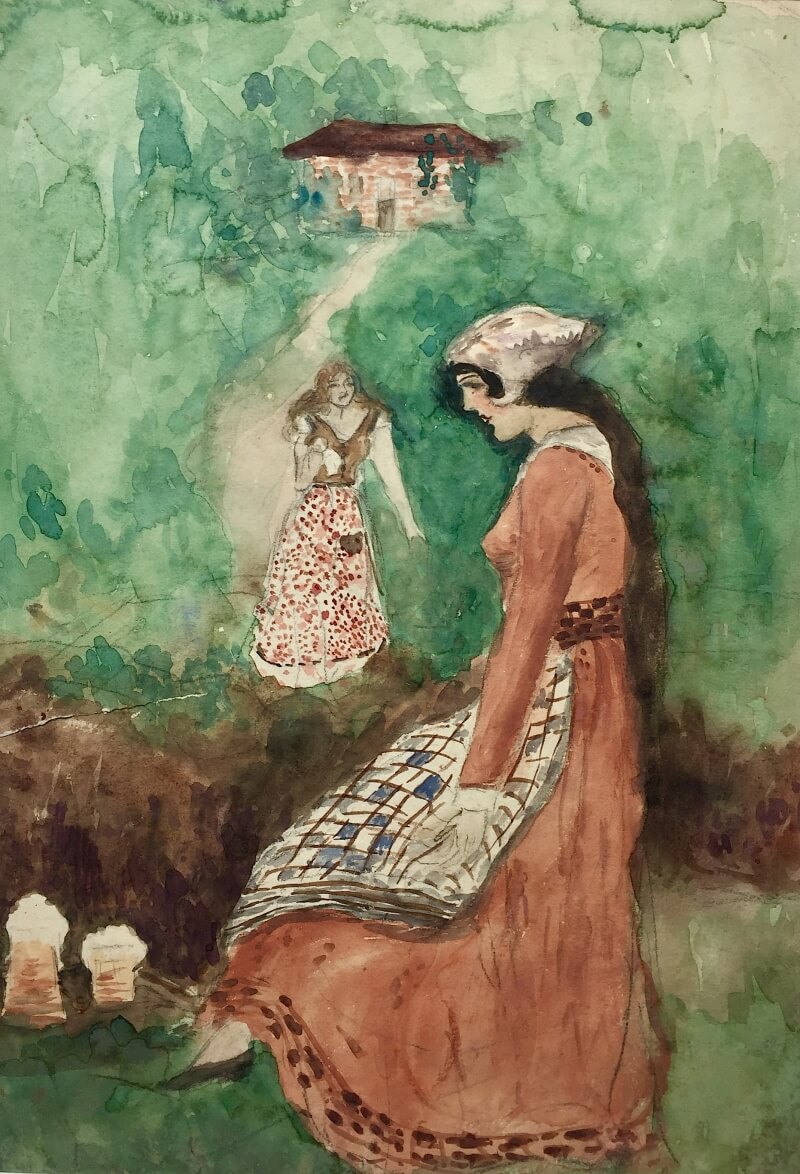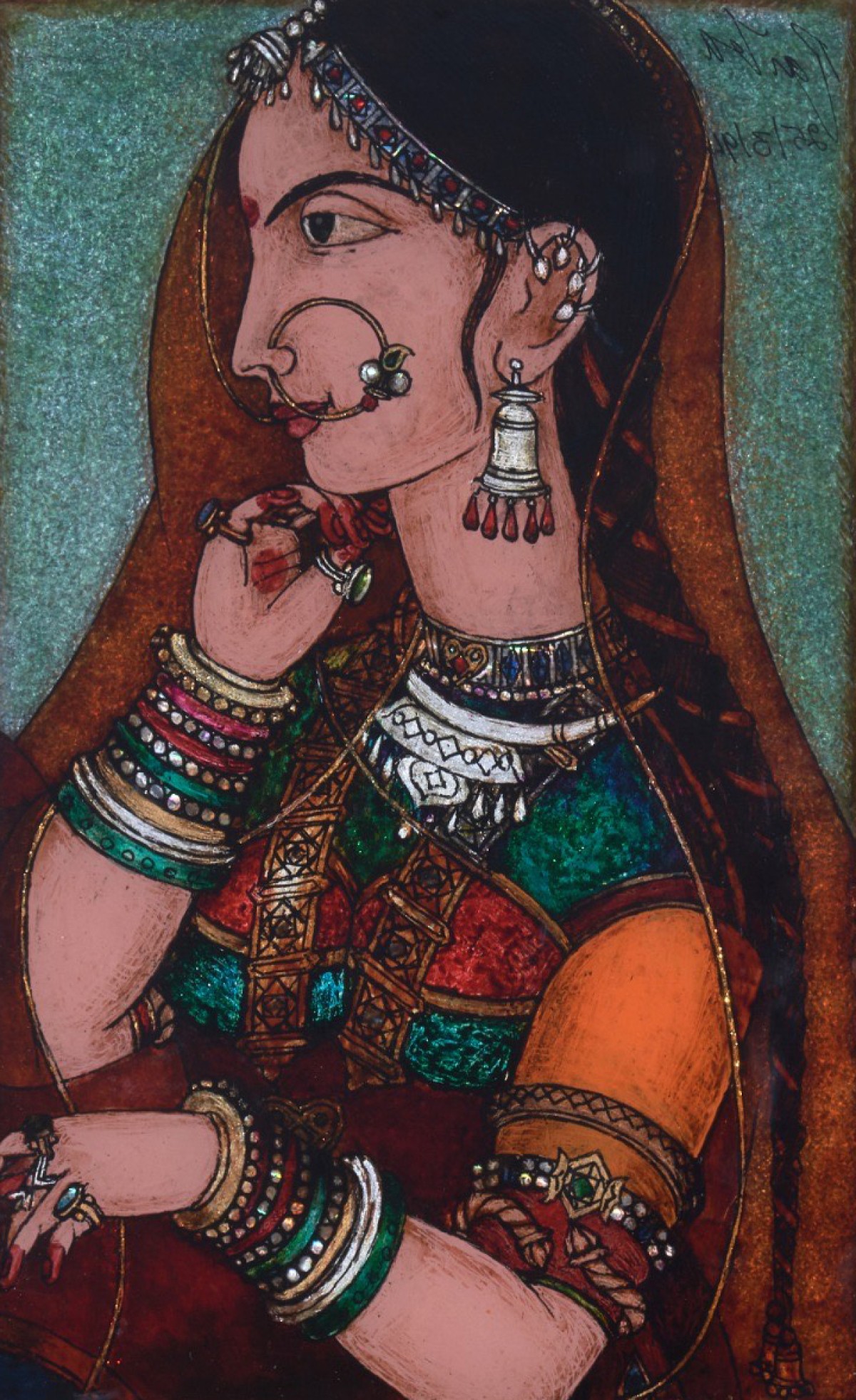
ABDUL AZIZ RAIBA
Akara Modern
1922 -2016
Abdul Aziz Raiba was born to a tailor’s
family in Mumbai. He completed his art education at the Sir J. J. School of
Art, Mumbai. Raiba was trained in a style of miniature paintings that were
characterized by their elegant subtlety. However, he soon diverged from the
nuanced nature of miniature art toward elements that were markedly bolder in
shape and stronger in outlines. This, along with the two-dimensional
arrangement, use of colours, and compositions drawn from Travancore-Cochin folk
art, made Raiba an eclectic artist. Influenced by his four-year stay in Kashmir
and the romanticism of the Kangra miniature school, his interpretation resulted
in a style that was inspired yet seminal.
Raiba is known for his landscapes and
rural folk imagery. His earlier works depicted animals, humans, and folk
motifs. He had worked with diverse mediums, from paintings, murals, and stained
glass works, to printmaking and creating canvases with jute.
Raiba won several awards, including
medals from the Bombay Art Society. He was an early member of the Progressive
Artists’ Group (PAG), and his work has found a home in the collection of the
Cairo Museum, Egypt, and at the National Gallery of Modern Art, Delhi.

